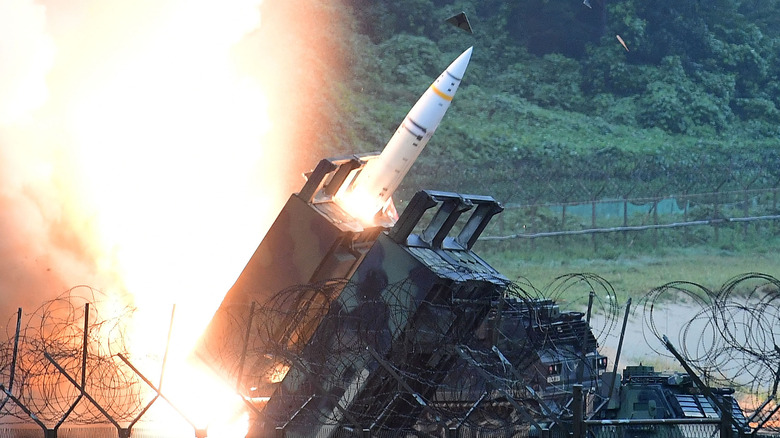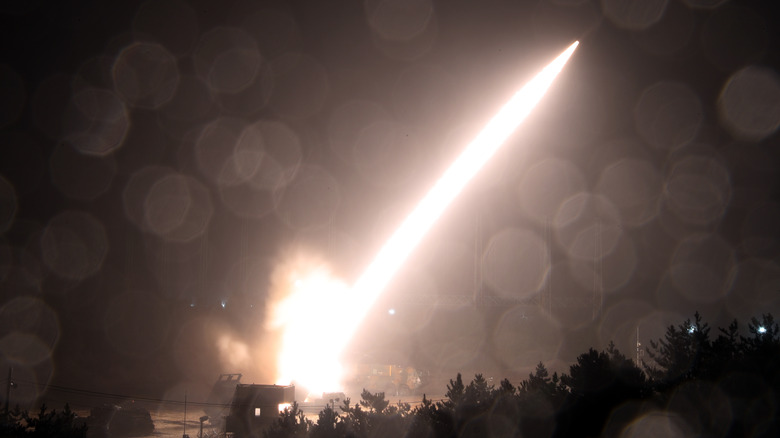The MGM-140 ATACMS Demystified: Understanding Its Price And Capabilities
Earlier this week, it was reported by the BBC that Ukrainian forces deployed a weapons system called the MGM-140 ATACMS to attack Russian air bases and Russian Air Force equipment. As acronyms and weapon system names often give no indication as to what it actually is or what it's used for, ATACMS stands for Army Tactical Missile Systems. It is a surface-to-surface guided missile first developed by Lockheed Martin for the United States Armed Forces but has since been sold to numerous countries, including Ukraine. The entire name "MGM-140 ATACMS" refers to the missile itself, not the vehicle or launch platform that deploys it. It has been in continuous service by American forces since 1986 and has been deployed during both Desert Storm and the United States Invasion of Iraq.
The missile itself comes in a number of variations, as described by the United States Army Acquisition Support Center. All versions of the missile itself are guided by GPS and can be launched from either a single launch tube or a battery of multiple launch tubes firing in tandem. Earlier versions have a range of 15 to 100 miles and more recent designations have accurate ranges of 43 to 186 miles.
Scheduled to be replaced
According to Lockheed Martin and the United States Army, the ATACMS can carry a variety of warheads. The M39 designation can carry between 300 and 950 APAM (anti-personnel and anti-materiel) bomblets, also referred to as "cluster munitions." Cluster munitions have been denounced by numerous human rights groups due to the weapon's indiscriminate nature. This version is no longer in production. Other versions carry a 500-pound single or "unitary" explosive warhead that is capable of either direct impact or detonating in an airburst. 500-pound fragmentation warheads are also used in the missile.
Each missile costs between $1.3 million and $1.7 million, depending on the variation. In 2018, the United States Army started converting cluster munition versions to single warheads. However, Reuters reports that the missiles sent to Ukrainian forces as part of its large military aid package consisting of numerous contracts (including Starlink) are shorter-range older variants of the ATACMS that potentially carry cluster munitions. Congressional Research Service documents suggest that the PrSM or Precision Strike Missile with a range of around 250 miles will eventually replace the ATACMS in service.

